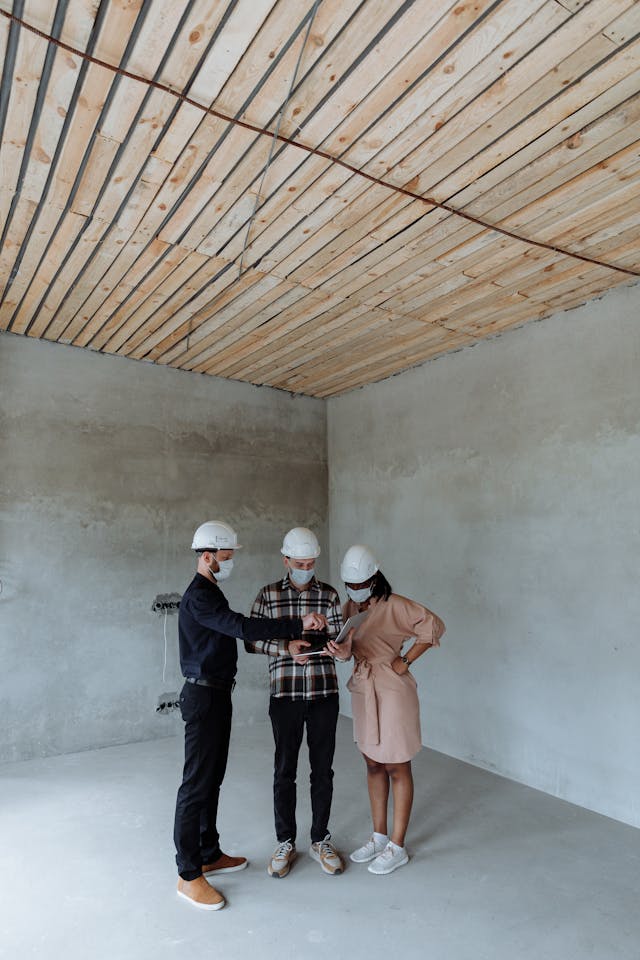How Union Membership Affects Construction Payroll and Benefits


The construction industry is foundational to economic growth, employing millions across the United States. As the sector evolves—driven by new technologies, relentless demand, and an ongoing skilled labor shortage—the effect of union membership on construction payroll and employee benefits becomes critical to both workers and employers. In this definitive guide, you'll learn how union construction benefits, union payroll management, and collective bargaining agreements shape compensation, labor conditions, and compliance in today's construction workplace.
What is Construction Union Membership?
A construction union represents skilled tradespeople—electricians, carpenters, laborers, ironworkers, plumbers, and more—primarily through a collective bargaining agreement. These agreements, negotiated between the union and employers, set terms for:
- Wages and pay scales
- Job security and grievance procedures
- Overtime, shift premiums, and paid time off
- Comprehensive employee benefits (healthcare, pensions)
- Training and apprenticeship standards
- Safety protocols and enforcement
With strong organization at the local and regional levels, construction unions ensure that uniform standards protect all qualified members working within their jurisdiction, no matter the contractor. This standardization is a key reason why union labor rates and benefits differ from those of non-union alternatives.
How Union Membership Impacts Construction Payroll

Standardized, Higher Wages
Union construction workers consistently earn more than their non-union peers. According to government labor data, union members in construction earn, on average, 12% to 20% more than non-union workers, whether measured hourly, weekly, or annually.
Key wage-related enhancements:
- Equal pay for equal work: Standardized by union contracts and strictly enforced.
- Predictable wage increases: Scheduled raises, cost-of-living adjustments, and negotiated bonus structures.
- Overtime, premium, and night shift pay: Union agreements commonly guarantee 1.5 times or 2 times the regular rate.
- Prevailing wage: Union contracts set the standard for public projects, influencing even non-union rates in high-union-density regions.
Transparency and Payroll Predictability
Union payroll management is renowned for clarity and predictability. Workers can confidently expect pay—down to the penny—thanks to:
- Standardized pay tables set in contracts
- Automatic overtime calculation
- Up-to-date deductions and benefit contributions
- Payroll software built specifically for union compliance
Through these systems, payroll errors are minimized, and wage theft is drastically reduced.
Influence on Non-Union Pay

Even for non-union roles, unionized construction helps raise local wage floors, especially in areas with strong union density. This lifts standards throughout the workforce and promotes fair competition among contractors.
Union Construction Worker Benefits
Access to Superior Employee Benefits
Among the biggest draws of union membership in construction are comprehensive employee benefits:
- Health Insurance: Over 80% of union construction workers have employer-sponsored health coverage, with lower deductibles, stronger coverage, and better family benefits.
- Retirement Security: 60% or more enjoy defined-benefit pensions or high-quality 401(k) plans with substantial employer contributions (significantly higher than the ~30% participation rate found among non-union workers).
- Paid Leave and Holidays: Union members receive more generous and more predictable vacation time, paid sick leave, and holiday pay, often negotiated into collective bargaining agreements.
- Disability Insurance: Many union contracts offer both short-term and long-term coverage, providing a crucial safety net.
Job Security & Legal Protections
Union contracts safeguard against:
- Arbitrary firing: "Just cause" clauses require valid reasons for termination.
- Unfair treatment: Due process and mandatory grievance procedures ensure accountability.
- Legal representation: Unions provide direct support for workplace disputes.
Apprenticeships, Ongoing Training & Safety
Union apprenticeship programs are among the best in the country, offering structured, paid, and multi-year training pathways. Ongoing upskilling keeps the workforce current, and union sites enforce high safety protocols, leading to:
- Lower accident/injury rates
- Higher skill levels
- Better retention
Union vs Non-Union: Key Payroll and Benefits Differences
These distinctions highlight the practical advantages of union membership for construction workers, setting consistent high standards for payroll and benefits.
Regional Trends and Demographics

National and Regional Union Density
In 2024, the overall union membership rate in the construction industry stood at a record low of 10.3%, a slight drop from previous years. However, this average masks significant regional differences:
- Highest union density states: Hawaii (26.6%), New York (20.6%), Alaska (17.6%), Connecticut, New Jersey, Oregon, and Washington, all above 15%.
- Lowest density: Southern and some Mountain West states, such as North Carolina (2.4%), South Dakota (2.7%), and South Carolina (2.8%), where “right-to-work” laws are prevalent.
Despite long-term declines, some building trades unions have experienced recent membership growth and record-breaking apprenticeship enrollment, reflecting localized market demand and proactive investments in workforce development.
Demographic Trends
- Higher unionization among older workers: Those aged 45–54 have the highest construction union membership rates, reflecting their career stability and retention strengths.
- Minority representation: Black and Hispanic workers have union membership rates that are close to or above the national average for all industries, indicating the union sector's role in promoting workplace equity.
Construction Payroll Management Challenges in Union Settings
Compliance and Record-Keeping
Managing union construction payroll is significantly more demanding. Employers must:
- Track multiple pay rates and trades, adjusting for apprentice/journeyperson status.
- Stay current with collective bargaining agreement updates
- Keep detailed records for benefits contributions across pension, health, and training funds.
- Ensure adherence to rules for prevailing wage projects and certified payroll reporting, especially on public infrastructure work.
Complex Benefits Administration
- Multi-employer fund payments: Contractors must contribute to numerous pension, health, and supplemental funds as specified by each union contract.
- On-time contributions are critical: Late or incorrect payments can result in financial penalties, legal action, and audits.
- Portability: Union benefits are typically portable across employers, allowing workers to maintain career flexibility.
The Expanding Role of Payroll Technology
Rising complexity means most union contractors rely on construction payroll software and payroll compliance services to automate calculations, prevent costly mistakes, and streamline union reporting. This ensures:
- Accuracy in deductions and benefit payments
- Automated compliance with collective bargaining updates
- Seamless certified payroll reporting for government projects
Broader Economic and Social Impacts of Unionization
Worker Retention and Productivity
Union construction employers benefit from:
- Lower turnover rates, reducing recruiting/training costs, and project disruptions.
- Higher productivity, morale, and craftsmanship, driven by strong job security, skills training, and mutual support.
Community and Societal Benefits
Widespread union membership in construction supports:
- Stable, middle-class incomes and homeownership
- Increased local tax revenues and reduced dependence on public assistance
- More resilient local economies, especially during downturns
Industry Innovation and Safety
Standardized union training keeps the labor force ahead of industry trends and regulatory changes. High safety standards not only save lives—they also reduce insurance costs and mitigate project risks, benefiting both contractors and clients alike.
Union membership has a far-reaching, positive effect on both construction payroll and employee benefits. Union workers in construction consistently enjoy:
- Higher, reliable wages
- Robust, employer-funded health and retirement benefits
- Greater job security and legal support
- Access to superior training and career development
- A safer, more equitable workplace
For employers, union labor comes with increased payroll management challenges, but also delivers a highly skilled, motivated workforce and fewer project complications.
As construction continues to modernize—and as regulatory requirements around wage, safety, and training grow—understanding the unique value and demands of union construction payroll is more important than ever. For contractors, managers, and policymakers, leveraging this knowledge is essential for driving both compliance and success.
Frequently Asked Questions

What is the average wage difference between union and non-union construction roles?
Union construction workers generally earn 12–20% more than their non-union counterparts, translating to wage gaps of $8–$10/hour for skilled trades like electricians, carpenters, and laborers.
Are union construction benefits better than those for non-union workers?
Yes. Over 80% of union construction workers have comprehensive health insurance, and more than 60% have strong employer-funded retirement plans, which far exceed the averages for non-union workers.
How is union construction payroll different for employers?
Union payroll demands complex, detailed reporting, strict compliance with collective bargaining agreements, and often the use of specialized payroll software or third-party payroll processing to manage benefits and prevent errors.
How do unions make construction sites safer?
Union training programs and strict safety protocols lead to lower rates of accidents and injuries, resulting in a safer, more productive work environment.
Can non-union construction workers get similar benefits?
Some high-end non-union firms offer competitive pay and benefits but cannot match the standardization, portability, and legal security found in union-negotiated packages.
Are union construction jobs declining nationally?
While membership has dropped to just over 10% in recent years, many states and major cities maintain strong union construction sectors, and apprenticeship enrollments remain high, signaling continued demand for trained, unionized talent.
What role do collective bargaining agreements play?
Collective bargaining agreements are the foundation of union wages, benefits, job security, and working conditions. They set sector-wide standards that are enforceable by law, supporting both transparency and equity.
Lorem ipsum dolor sit amet, consectetur adipiscing elit. Donec ullamcorper mattis lorem non. Ultrices praesent amet ipsum justo massa. Eu dolor aliquet risus gravida nunc at feugiat consequat purus. Non massa enim vitae duis mattis. Vel in ultricies vel fringilla.
Introduction
Mi tincidunt elit, id quisque ligula ac diam, amet. Vel etiam suspendisse morbi eleifend faucibus eget vestibulum felis. Dictum quis montes, sit sit. Tellus aliquam enim urna, etiam. Mauris posuere vulputate arcu amet, vitae nisi, tellus tincidunt. At feugiat sapien varius id.
Eget quis mi enim, leo lacinia pharetra, semper. Eget in volutpat mollis at volutpat lectus velit, sed auctor. Porttitor fames arcu quis fusce augue enim. Quis at habitant diam at. Suscipit tristique risus, at donec. In turpis vel et quam imperdiet. Ipsum molestie aliquet sodales id est ac volutpat.

Ipsum sit mattis nulla quam nulla. Gravida id gravida ac enim mauris id. Non pellentesque congue eget consectetur turpis. Sapien, dictum molestie sem tempor. Diam elit, orci, tincidunt aenean tempus. Quis velit eget ut tortor tellus. Sed vel, congue felis elit erat nam nibh orci.
Dolor enim eu tortor urna sed duis nulla. Aliquam vestibulum, nulla odio nisl vitae. In aliquet pellentesque aenean hac vestibulum turpis mi bibendum diam. Tempor integer aliquam in vitae malesuada fringilla.
Elit nisi in eleifend sed nisi. Pulvinar at orci, proin imperdiet commodo consectetur convallis risus. Sed condimentum enim dignissim adipiscing faucibus consequat, urna. Viverra purus et erat auctor aliquam. Risus, volutpat vulputate posuere purus sit congue convallis aliquet. Arcu id augue ut feugiat donec porttitor neque. Mauris, neque ultricies eu vestibulum, bibendum quam lorem id. Dolor lacus, eget nunc lectus in tellus, pharetra, porttitor.
Ipsum sit mattis nulla quam nulla. Gravida id gravida ac enim mauris id. Non pellentesque congue eget consectetur turpis. Sapien, dictum molestie sem tempor. Diam elit, orci, tincidunt aenean tempus. Quis velit eget ut tortor tellus. Sed vel, congue felis elit erat nam nibh orci.
Mi tincidunt elit, id quisque ligula ac diam, amet. Vel etiam suspendisse morbi eleifend faucibus eget vestibulum felis. Dictum quis montes, sit sit. Tellus aliquam enim urna, etiam. Mauris posuere vulputate arcu amet, vitae nisi, tellus tincidunt. At feugiat sapien varius id.
Eget quis mi enim, leo lacinia pharetra, semper. Eget in volutpat mollis at volutpat lectus velit, sed auctor. Porttitor fames arcu quis fusce augue enim. Quis at habitant diam at. Suscipit tristique risus, at donec. In turpis vel et quam imperdiet. Ipsum molestie aliquet sodales id est ac volutpat.
Mi tincidunt elit, id quisque ligula ac diam, amet. Vel etiam suspendisse morbi eleifend faucibus eget vestibulum felis. Dictum quis montes, sit sit. Tellus aliquam enim urna, etiam. Mauris posuere vulputate arcu amet, vitae nisi, tellus tincidunt. At feugiat sapien varius id.
Eget quis mi enim, leo lacinia pharetra, semper. Eget in volutpat mollis at volutpat lectus velit, sed auctor. Porttitor fames arcu quis fusce augue enim. Quis at habitant diam at. Suscipit tristique risus, at donec. In turpis vel et quam imperdiet. Ipsum molestie aliquet sodales id est ac volutpat.
- Lectus id duis vitae porttitor enim gravida morbi.
- Eu turpis posuere semper feugiat volutpat elit, ultrices suspendisse. Auctor vel in vitae placerat.
- Suspendisse maecenas ac donec scelerisque diam sed est duis purus.

Lectus leo massa amet posuere. Malesuada mattis non convallis quisque. Libero sit et imperdiet bibendum quisque dictum vestibulum in non. Pretium ultricies tempor non est diam. Enim ut enim amet amet integer cursus. Sit ac commodo pretium sed etiam turpis suspendisse at.
Tristique odio senectus nam posuere ornare leo metus, ultricies. Blandit duis ultricies vulputate morbi feugiat cras placerat elit. Aliquam tellus lorem sed ac. Montes, sed mattis pellentesque suscipit accumsan. Cursus viverra aenean magna risus elementum faucibus molestie pellentesque. Arcu ultricies sed mauris vestibulum.
Essential resources for contractors








